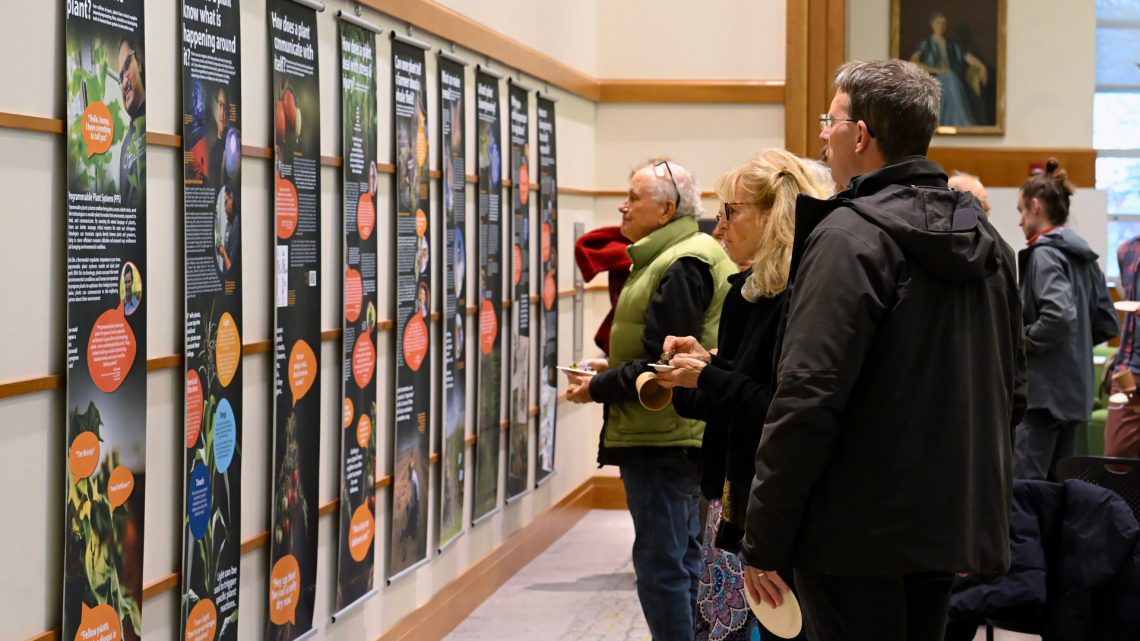
Rand Hall is being transformed over the next 18 months to house the Mui Ho Fine Arts Library, a state-of-the-art facility on its top two floors with massed stacks of books as its centerpiece, digital resources, and voluminous reading and study space.
Along with 8,000 square feet of shop space for the College of Architecture, Art and Planning (AAP) occupying the first floor, the 107-year-old industrial building is being entirely rehabilitated.
Boasting one of the best circulating collections of fine arts materials in the country, the library will accommodate 125,000 volumes, in a configuration forming an inverted ziggurat of books two stories high with stacks accessible by stairs and walkways.
“It’s a really stunning commitment to the book in the 21st century,” said Gerald Beasley, the Carl A. Kroch University Librarian. “The space is very theatrical. It’s going to be a great place – even for people who never use the library, it will have a strong and interesting presence on that part of the campus.”
An architecture librarian for most of his career, Beasley said he is aware of “the special relationship that architects have with the book. This is a profession which requires and calls for the book to be physically present. There are other disciplines where that’s just not called for; especially those that are more oriented to periodicals or electronic delivery.”
The library’s primary users also include Herbert F. Johnson Museum of Art staff, and students and faculty in landscape architecture, fine art, city and regional planning, interior design and the history of art and visual studies.
The renovated Rand Hall will visibly display two essential activities of the AAP community, said Kent Kleinman, the college’s Gale and Ira Drukier Dean.
“It’s a makerspace-cum-reading facility,” he said. “You’ll see people working with material and tools on the ground floor and working with texts and images on the upper floors – the building becomes an embodiment of those two ways of knowing the world. The windows are large, so you will see both of these activities very clearly, especially at night when Rand Hall is lit up.”
Other features will include reading carrels with built-in monitors and lockable book storage, public computing stations and a seminar room, and Kleinman foresees having a large touch screen so users can call up digital materials. All within a few yards of the architecture studios in adjoining Milstein Hall.
The Mui Ho Fine Arts Library will feature three dense stack levels providing shelving for approximately 125,000 volumes, a generous reading area, spaces for group and individual study on the main library level and office space on the side of the building near Milstein Hall.
“I used to talk a lot about bringing the collection into the studio and the studio into the collection,” Beasley said. “This arrangement, it’s about as good as it can get.”
Mui Ho ’62, B.Arch. ’66, an architect and educator retired from the University of California, Berkeley, committed $6 million to the library in 2013.
The $21.6 million project received its final approval from the Cornell University Board of Trustees Dec. 7, and contractors from Welliver began interior demolition work in Rand Hall Dec. 19. Construction is expected to be completed in June 2019 and the library will open for the subsequent fall semester.
Wolfgang Tschapeller, M.Arch. ’87, is the design architect, and New York City-based STV is the architectural firm of record, with a team led by Harris Feinn, B.Arch. ’69, M.Arch. ’71.
“The design,” Tschapeller said, “is an immediate and quite physical invitation to discover an extraordinary collection, which appears as one big volume, visible in its entirety upon entering. [Interconnecting] staircases are the keys to enter this volume of knowledge, [to] browse, read and wonder.”
About half of the on-site fine arts collection previously available in Sibley Dome and the east wing of Sibley Hall was moved to the third floor of Rand Hall when Milstein Hall was completed in 2011.
“Milstein had an impact on circulation patterns and the organization of the college, and this is the final step in that reorganization,” Kleinman said.
During the construction, Fine Arts Library services are located in B56 East Sibley, with library staff, reference books, journals and reserve books on-site. Other holdings can be called in from the library annex.
The building will realize significant energy savings from the project with upgrades including rigid foam insulation, installing double-glazed windows all around and replacing all mechanical systems, with a projected target of cutting 70 percent of Rand Hall’s existing energy use, Kleinman said.
In the run-up to the project, AAP students used empty spaces in Rand for a variety of creative projects and performances. Similar opportunities will exist with the next iteration of the building.
One new feature will be a 1,500-square-foot structural deck on Rand Hall’s roof, outfitted with base plates for temporary structures as well as power, water and digital connections.
“It will be a site for experimental pavilions built by faculty and students on a recurring basis, every year or every two years,” Kleinman said. “These full-scale constructions will be a testimony to ongoing research in building design and construction at Cornell, and a crown for this utilitarian but noble building.”
As a visiting critic in the early 1950s, futurist and inventor R. Buckminster Fuller worked with Cornell students to build a geodesic dome atop Rand Hall.
“Adaptive reuse is a likely paradigm for work on campus in the foreseeable future,” Kleinman said. “Repurposing existing buildings for new programs involves respecting the past and the present. I hope the Rand Hall project will serve as an example of a lively dialogue with history.”
A version of this story first appeared in the Cornell Chronicle.





